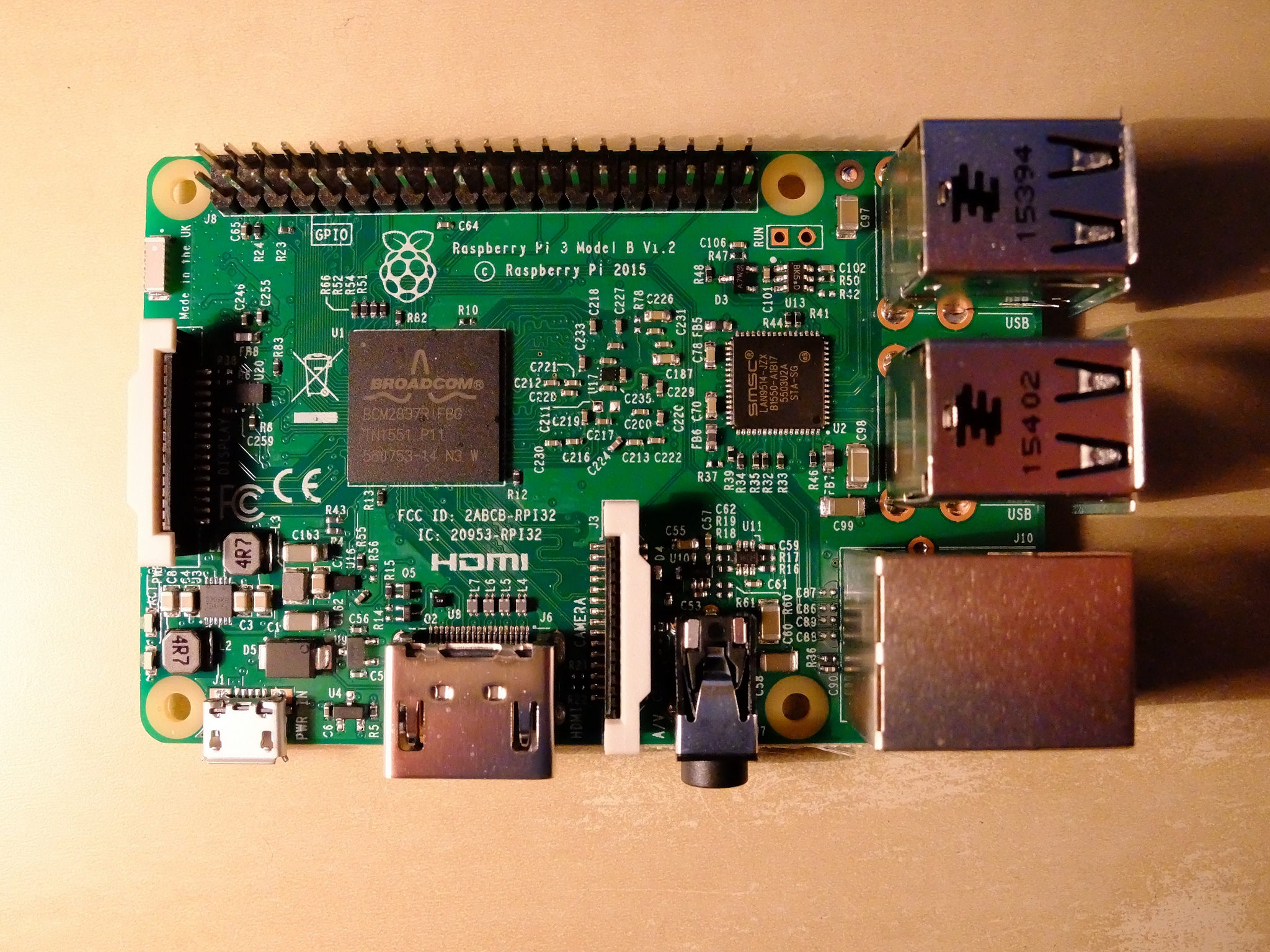OpenAg Wiki Archive
Archived Contents from the original OpenAg Wiki (snapshot on Apr 8, 2020)
The archived wiki only includes information up the v3.0 version of the PFC-EDU, and is here for preservation purposes. You can find resources about the latest version of the PFC v4.0 on the Personal Food Computer resources page.
Raspberry Pi
Raspberry Pi is a single-board Linux computer. The Food Computer 2.0 uses the Raspberry Pi 3.

(Photo: Raspberry Pi 3 by Decio “desmodex” on Flickr)
Setting up
The Raspberry Pi runs its operating system off of a Micro SD card. Before working with the Pi, you’ll need to install an operating system on to a Micro SD. See Installing the OS for details.
Working with the Pi
The Raspberry Pi is a Linux computer, so if you know Linux, the same stuff holds. For people new to the Rasbperry Pi and command line, here are some useful things to know:
openag_brain and openag_python
Some useful resources for working with /openag_brain/ on the Raspberry Pi’s command line:
Finding the IP address of your Pi
Once your Raspberry Pi is connected to the network, how do you find it’s IP address?
If you’ve got terminal access to the Pi (e.g. a keyboard and monitor hooked up to it), you can type this command into the terminal:
ifconfig
This will list all the network connections. Look for the one that says
wlan0 and the line that says inet connection. This is your IP.
To find the Raspberry Pi’s IP from your laptop, try AdaFruit’s Pi Finder app.
ssh into Raspberry Pi
By default, the ssh credentials for the Raspberry Pi are:
- username:
pi - password:
raspberry
You can ssh into the Pi with:
ssh pi@<IP ADDRESS>
When prompted, type the password raspberry.
Restart
sudo reboot
Shutdown
sudo shutdown now
Hardware shutdown
If Raspbian Jesse (full version with desktop) is installed, then you can use GPIO pins 3 and 5 to send the shutdown signal. Short 3 and 5 with a GPIO pin connector, or with some wire. See http://www.makeuseof.com/tag/add-reset-switch-raspberry-pi/.
Finding a file
find -name myfile.txt
Editing a file
nano path/to/file.txt
This will open up the Nano editor in the terminal.
If the computer complains that you don’t have privileges to edit the file:
sudo nano path/to/file.txt
Connecting to Wifi on Raspbian Lite
Rasbpian Lite doesn’t have a desktop. We recommend using the full version of Raspbian with desktop, but if you’re using Lite, here’s how to connect to a network.
Tutorials:
- https://www.raspberrypi.org/documentation/configuration/wireless/wireless-cli.md
- https://thepihut.com/blogs/raspberry-pi-tutorials/83502916-how-to-setup-wifi-on-raspbian-jessie-lite
In a nut:
sudo nano /etc/wpa_supplicant/wpa_supplicant.conf
In the case of the example network, we would enter:
network={
ssid="testing"
psk="testingPassword"
}
Note these have to be double-quotes. If your keyboard is outputting @
instead of double-quotes, you might have to reconfigure your locale and
keyboard with sudo raspi-config. (Usually you should choose the 101
key keyboard.)
At this point, wpa-supplicant will normally notice a change has occurred
within a few seconds, and it will try and connect to the network. If it
does not, either manually restart the interface with sudo ifdown wlan0
and sudo ifup wlan0, or reboot your Raspberry Pi with sudo reboot.
You can verify if it has successfully connected using ifconfig wlan0. If the inet addr field has an address beside it, the Pi has connected to the network. If not, check your password and ESSID are correct.
Creating backup images
See http://raspberrypi.stackexchange.com/questions/311/how-do-i-backup-my-raspberry-pi.
In a nut:
diskutil list
dd if=/dev/rdiskN of=/path/to/my_image.img bs=1m
Tip: if you zip the image, it will be much smaller.
